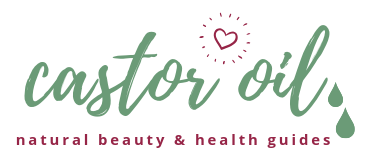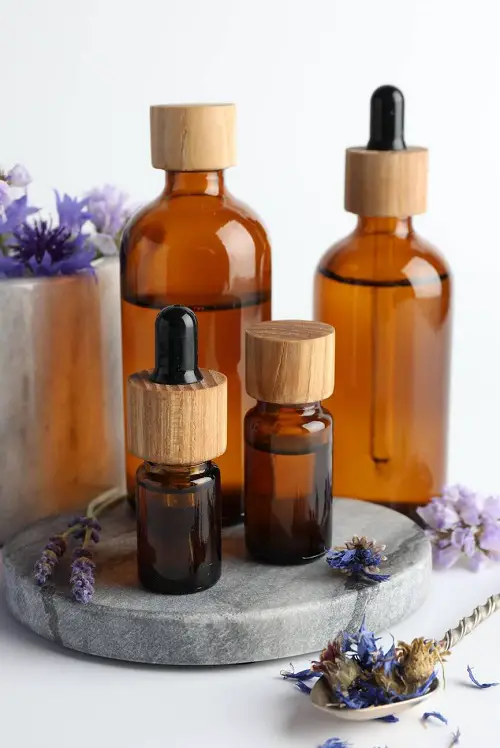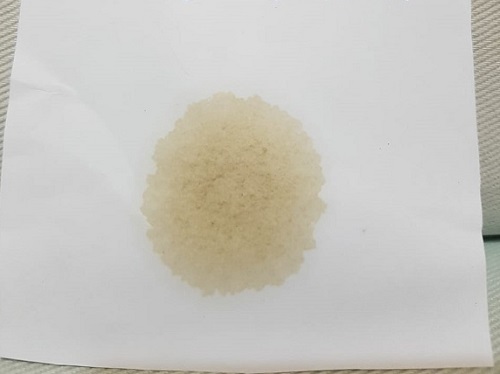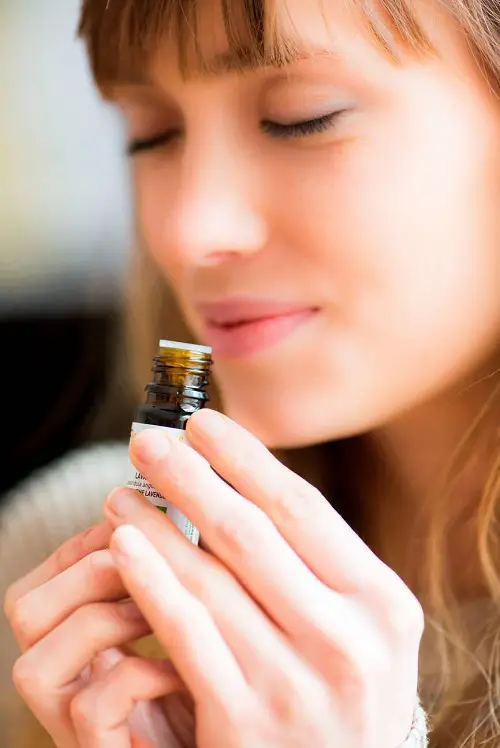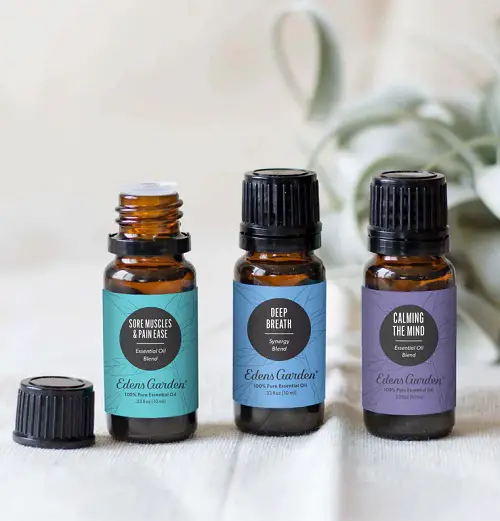Before investing in those bottles of goodness, learn about these unmistakable signs that show essential oils are fake!
Essential oils have always been on the high-end side of stores because harvesting plants and producing them requires a lot of investment, not to mention the number of plants it takes to make an ounce of essential oil. While pure essential oils are potent and have powerful healing and therapeutic properties, you can’t say the same for cheap perfume-like solutions that smell and just feel cheap. But how can you distinguish these from the real oils? Here are some unmistakable signs that your essential oils are fake!
Unmistakable Signs Your Essential Oils Are Fake
1) The Type of Container
If you come home with a bottle of essential oil in a plastic container or even a clear glass container, any essential oil connoisseur will immediately tell you it’s probably fake!
Pure essential oils must be stored in dark-colored glass bottles for two main reasons. First, essential oils have potent chemical compounds that can break down and react with plastic containers. The glass must also be dark blue or amber to protect the oils from ultraviolet degradation, which, as you already guessed, can result in the oils losing their therapeutic properties.
You might only find essential oils in a plastic container if they have been pre-diluted with a carrier oil. These will generally be labeled as ‘ready to use’ massage blends. You might also find essential oils in shower gels and other skin and body care products. These oils are always in their diluted forms.
Besides the type of container, you can easily distinguish pure essential oils from fake ones depending on whether they are stored in a cool, dry place. Subjecting essential oils to heat changes their chemical composition.
2) How The Oil Was Harvested and Produced
Since essential oils are extracted from plants and plant parts like the leaves, flowers, or rinds of fruits, the health of said plants is crucial. This implies taking into account where and how they are growing, i.e., whether their soil and environment are pesticide-free. Moreover, the extraction method of essential oils must be such that their therapeutic properties are preserved while the essential oils remain toxins-free.
The most crucial part of ensuring you are purchasing pure essential oil is checking if it is “wild-crafted” or “organic.” Either of these labels means that the plants from which the particular essential oil is derived have not been growing on a farm but are wild, meaning they are free of pesticides and harmful chemicals.
Poor-quality essential oils, derived from poor crops are as beneficial as putting scented water on your skin. Even worse, they could be adulterated with harmful chemicals, causing adverse side effects on your skin, hair, or overall health. So, if your essential oil is not 100% pure or organic, you would be wasting your hard-earned money on an expensive fake!
If you ever bought a citrus essential oil, waiting for weeks and months to actually experience any therapeutic properties, only to find yourself in the worst-case scenario of allergic reactions, chances are your essential oil could have been fake. Or, your oil had probably been extracted and produced from poor crops laden with pesticides, which is quite frequent in citrus oils. So you must pay special attention, especially when buying citrus oils, and ensure that they are 100% organic.
3) The White Paper Test
Pour a drop or two of your newly purchased essential oil on white paper (a computer printer paper will work fine). Allow the oil to dry and see if there is a residue of an oil ring. If yes, we apologize for being the bearer of bad news. Your essential oil is probably fake.
100% pure and organic essential oils never leave oil residues on paper after they dry, as the oils will completely evaporate. There can be cases where the oil is prediluted with a carrier oil like coconut oil; you would end up with an oily residue.
There are some more exceptions to this test. For example, patchouli oil, sandalwood, and German chamomile are deeper in color and heavier in consistency. These types of oils may leave a slight tint behind. However, the residue itself shouldn’t be greasy.
4) The Name and The Label
Grab the essential oil bottles you have and check the labels. Do they say the oil’s name and scientific name? If yes, congratulations—you have got yourself a pure one! If not, well, you might have put a hole in your pocket with a fake.
A manufacturing company of pure essential oils will typically include the country of origin, batch number, ingredients, expiry date, safety advice, storage information, and details about the company, along with the common name and Latin name of the essential oil. The label should also contain the official USDA seal. Look out for the labels “wild-crafted,” “organic,” or “100% pure”. This is all of the essential information you should be looking for when buying pure, unadulterated oil.
If the Latin name is missing, the oil you are purchasing may actually be a non-essential oil that just perfume added to it to match the scent profile of a specific essential oil. For example, when purchasing peppermint essential oil, look for something that reads: Peppermint, Mentha x piperita.
Another red flag you should look out for in the label information is spelling mistakes on the label!
5) The Smell Test
This is one of the easiest ways to gauge whether an essential oil is fake, as you can usually tell when the smell of the oil is off. But do you know all the factors that can influence the smell of essential oils? The first factor is where the essential oil is sourced from. The oil is definitely a dupe if you smell more chemicals than oil.
Sometimes, if you are buying an essential oil for the first time, it is helpful to research how it should smell. Besides, suppose you have been buying from the same company for a long time and notice the smell is stronger or weaker than it should be. In that case, the company is probably adulterating the oil’s composition with synthetic chemicals.
6) Cost of The Essential Oil
Considering that essential oils are quite expensive for the 4-ounce bottles they come in, it is natural to try to score some deals occasionally. But if you are proud of buying an expensive 100% organic essential oil at half or a quarter of the usual price, the probability that you have been sold a fake is quite high!
Pure essential oils generally have a high price tag because it takes an astonishingly large amount of plant to produce even a 4-ounce container.
For example, one pound of lavender essential oil is made from a whopping 150 pounds of lavender flowers, while more than 250 pounds of peppermint leaves are needed to make just one pound of peppermint essential oil. So, the cheaper you find an essential oil, the more chances it has of being adulterated with harmful chemicals or toxins.
7) Manufacturer’s Professional Website and Contact Info
If you are buying essential oils for the first time, it is best that you go out there and buy from a reputed offline store. That is because the Internet, especially e-commerce sites, is full of anonymous, third-party sellers that sell all kinds of oils, none of which you can truly call pure or organic.
Since essential oils can have a direct effect on your skin, hair, and overall health, it is important to research and buy them from a well-known company with a professional website that contains full contact details of their phone number and address
8) How the Oil Dissolves and How the Oil Pours
Last but not least, check the purity of your essential oil by pouring a few drops of it in water. If your oil floats to the top of the water, it is pure. However, you may have bought a fake if your essential oil dissolves in water, producing a milky or opaque solution. Companies often try to reduce the cost of producing essential oils by including surfactants, emulsifiers, or both, ultimately reducing the integrity of the oil.
You can also tell if an essential oil is fake if you pay attention to how it is sealed. Pure essential oil comes with a plug that controls how many drops come out at once. This plug is called an “orifice reducer.” Not only does it help you get the right dosage, but it also helps prolong oils that are prone to oxidation, limiting their contact with air.
